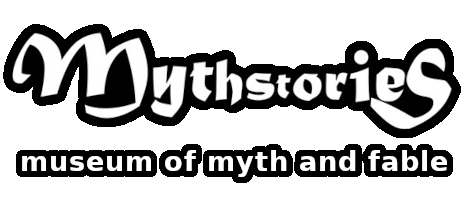Storytelling plays a crucial part in Customs and Festivals around the World and there are many artefacts made to facilitate the telling of specific tales. So Mythstories museum collected an array of these to display together and feature at certain times of year.
To discover these artefacts we’ll take a journey through the year.
1st January – Year of the Rabbit Shrine

A new exhibit took its place in the entrance hall of the museum to mark the beginning of 2011: A little shrine to welcome the Japanese Year of the Rabbit.

The artefact was a gift from our Japanese visitors “Spice Arthur 702“, the magical Kamishibai team who brought their innovative, new wave storytelling take on the Japanese tradition to Mythstories museum in October 2010 delighting visitors.
2023 is another Japanese Year of the Rabbit, and the Japan Society have made available this wonderful downloadable Kamishibai resource suitable for Reception to Year 4 telling the story of the Moon Rabbit.
1st March – Martenitsas

Here’s an interesting tradition from Bulgaria that’s been in existence for more than one thousand three hundred years, Martenitsas. People hang them in trees on the 1st March and they are left at the mercy of snow, wind and rain until the first sign of Spring is seen, traditionally a stork returning from its winter feeding ground.
These beautiful red and white tassels have a heroic story behind them too which chronicles the foundation of the first Bulgarian Kingdom in the Balkans.
The Origin of the Martenitsa: A Bulgarian Legend
There are many legends that trace the origin of this custom to just before the foundation of the first Bulgarian kingdom in the Balkans in 681 AD. Here is one version of the story.
Long ago in the seventh century AD, the Bulgarians lived in the Russian steppes north east of the River Danube under the rule of the great Khan (king) Kubrat.
One day, the khan’s five sons and his daughter, Houba were out hunting when they found themselves at the shores of the majestic River Danube. Suddenly a beautiful silver stag appeared before them. It leaped into the waters and crossed over to the opposite bank of the river. The hunters held back their arrows and gazed in wonder for they knew that this was not a stag for hunting. It was a sacred stag, and it had shown them that there was a ford here, a safe passage across the river.
Just then, a bird flew down from the sky. It brought a message to return home at once, for their father, the great Khan Kubrat was dying.
Kubrat lay on his deathbed. When his family had gathered around him, he handed his five sons a bundle of sticks and told them to break it in two. Each of the brothers tried, but not one succeeded. Then the king took the bundle, separated the sticks and broke them one by one. “My sons,” he said, “Like these sticks, one alone will break easily. Together united, you will be strong, and you will never become the slaves of others.”
Some years later, the fierce Khazar tribe attacked the Bulgarians, seized the capital city and imprisoned Kubrat’s daughter, Houba. Houba tried to kill herself but she was stopped by her Khazar captors. However, her actions gave four of her brothers a chance to escape, and they set out in different directions to seek new lands where they could live in freedom. Her other brother, Bayan stayed with Houba under Khazar rule.
Houba watched and waited. Then one day a falcon with a golden thread tied to its leg flew into her room. This was the secret sign that Houba had been waiting for. Her third brother Asparouh had crossed the Danube and had reached the land that is now known as Bulgaria. This was the signal for her to join him
Houba and Bayan fled in secret, but the Khazars soon discovered their escape and set out in pursuit. On the banks of the River Danube, the enemy caught up with them. Desperately, Houba looked for the ford that she knew existed. She tied a white thread to the leg of the falcon, gave the thread to Bayan and let the bird fly. The falcon would show them the way.
Just then, a Khazar arrow sped through the air and struck Bayan in the shoulder. His blood gushed forth, staining the white thread with red, but he and his sister struggled on. They crossed the Danube and at last they reached the new land. There Bayan died in peace and freedom.
In honour of his brother, Asparouh tore the white and red-stained thread into strips and decorated his warriors with it to bring good luck and blessings. It was 1st March, and the custom has remained in Bulgaria ever since.
But the five brothers had not heeded their father’s advice to remain united. They had gone their separate ways, and Khan Kubrat’s great kingdom in the Russian steppes was gone forever.
©Moni Sheehan – A Spell In Time July 2005

The Martenitsas were made for us by the Bulgarian myth and folklore performing arts company, “A Spell In Time” when they visited the museum in 2005. Mythstories brought the group for a short tour of Shropshire which included a Martenitsa making workshop in Clive Primary School.






1st October – Corn Dollies

Corn Dollies, also known as Corn Maidens or Corn Mothers are an important part of Harvest Festivities in European Culture and have been since Pagan times. There are probably as many different beliefs and customs about them as there are shapes and styles of corn dolly.
The story we featured with our Corn Dollies was a story in song, John Barleycorn. Try your voices on a little bit of retro midi file karaoke and see if you can sing along? The lyrics to this setting by classical composer Ralph Vaughan Williams are below.
click for the lyric…
There came three men from out the West
Their victory to try,
And they have taken a solemn oath
John Barleycorn should die.
Sing right follol the diddle all the dee
Right folleero dee.
They took a plough and ploughed him in
Laid clods upon his head
And they have taken a solemn oath
John Barleycorn is dead.
Sing right follol the diddle all the dee
Right folleero dee.
So then he lay for three long weeks
Till the dew from heaven did fall,
John Barleycorn sprang up again
And that surprised them all.
Sing right follol the diddle all the dee
Right folleero dee.
There he remained till midsummer
And looked both pale and wan,
For all he had a spikey beard
To shew he was a man.
Sing right follol the diddle all the dee
Right folleero dee.
But soon came men with their sharp scythes
And chopped him to the knee
They rolled and tied him by the waist
And served him barbarously.
Sing right follol the diddle all the dee
Right folleero dee.
We’ll tip white wine into a glass
And scarlet into a can
John Barleycorn and his brown bowl
Shall prove the better man.
Sing right follol the diddle all the dee
Right folleero dee.
25th December – Portable Nativity Retablo

This portable, pocket nativity comes from Northern Chile, and tells its story including the odd cactus here and there.
See the retablo open up from its closed form here… https://youtube.com/shorts/CfVfJ21U0bs?feature=share
It is a beautifully crafted artefact with baked dough figures painted and varnished enshrined in a case of split bamboo held together by tiny leather straps. It folds together fastened by a string of red and white wool to fit in the pocket.
With one of these you’ll never be without a shrine to say your prayers wherever you go, just hang it from its string and it’s altars to go!
Retablo is a folk art from the Andes region of Chile and Peru. You can take up the challenge to make your own retablo and find out more about the retablo tradition by clicking the link below…
25th December – Worry Doll Nativity

Another way of making an artefact to help tell the Nativity story is found further North in the Americas in Guatemala. This worry doll nativity shows Mary and Joseph with the Baby Jesus dressed in traditional Mayan style. Instead of shepherds with sheep we have Alpacas. In the background you can see the mountainous highland region of Guatemala where the worry doll tradition began. Sometimes it is easier to tell a story by trans-locating it to familiar territory.
The Worry Doll tradition dates back to the Maya People but is still very much alive today. Worry Dolls were made to give to anxious children. The child could tell all their worries to the little doll and then put the doll under their pillow, and by the morning the child’s worries would have been taken away. The dolls are traditionally made of scraps of textiles and string, nowadays scraps of paper, cardboard, adhesive tape and wire are used too. It is the ultimate craft for recycle by re-use making use of even tiny scraps of materials that would be otherwise considered as rubbish. Here are some other worry dolls that were part of the Mythstories Collection. Why not try to make some of your own?


These Customs and Festivals artefacts now are part of the Mount Pleasant Primary School mini storytelling museum in Shrewsbury.




